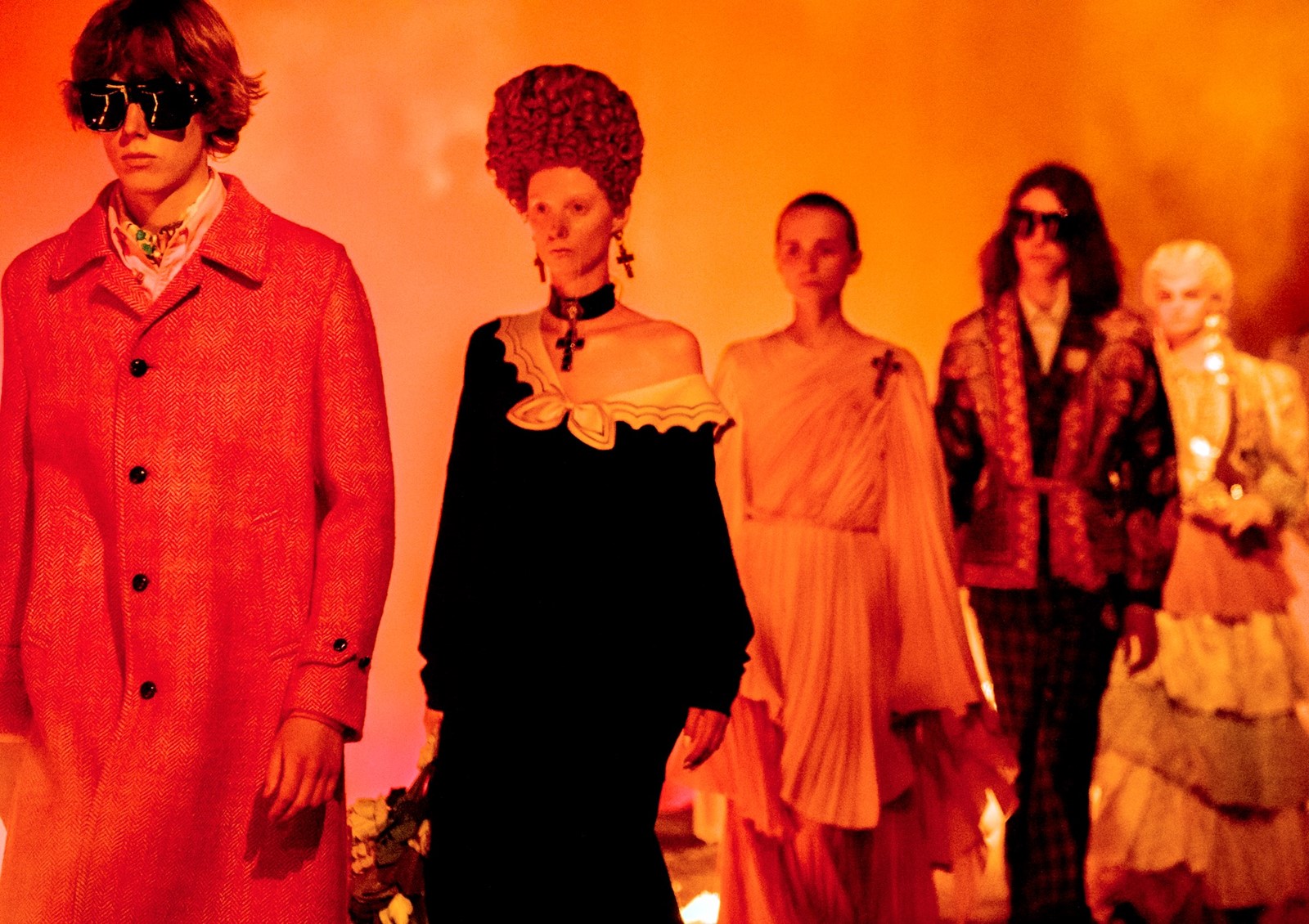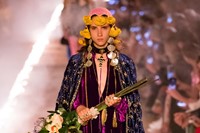Outside the old town walls of Arles, shadowed by the Chaîne des Alpilles mountains, lies the Alyscamps – a Roman necropolis whose name is derived from a term in Provençal dialect, Aliscamps. In turn, that comes from the Latin Elisii Campi – in plain English, the Elysian Fields. In other words, heaven on earth. If the opportunity presented itself, who wouldn’t want to throw a party in such storied enclaves? Especially if that somebody isn’t just anybody but Alessandro Michele, whose work as creative director of Gucci has been infused with mythologies and historical allusions such as these. Bucking against the notion of Cruise collections as something light and carefree, he chose to unofficially end the season with an end-of-days scenario, staging Gucci’s 2019 offering amidst the stone sarcophagi (luckily, empty) of Alyscamps. At 10pm, after dusk fell, and by candlelight. Light and carefree, it was not.
Rather, it was epic, biblical even – beginning with a Dantean inferno igniting in a moat around the Medieval Church of Saint Honoratus, and licking down the tree-lined l’allee (as painted by Van Gogh). It was part Baroque Italian painting, part John Landis’ Thriller video. And then, Michele’s cultish tribe, clutching funereal flowers and handbags like religious relics, emerged from said church clad in clothes that mashed together collegiate attire with ecclesiastic vestments, throwbacks to Camarague costume, to matadors (Arles comes close to Spain) and the Victorian-esque ballgowns of traditional Arlesienne costume. “Death is a fascination,” said Michele in show notes that also listed a litany of collaborations, once again mingling the sacred and profane: Sega, Major League Baseball, the Chateau Marmont hotel in Los Angeles, the popstar Billy Idol. Yes, those are collaborations, not inspirations, presented as embroideries alongside verses from Dante’s Divine Comedy and jewellery recalling medieval graves. One pair of black trousers were criss-crossed with white lacing that spelled out “MEMENTO MORI” across the models’ skinny thighs. In art, those words represent symbolic reminders of the intransigence of human existence. To remember death.
“Death is a fascination” – Alessandro Michele
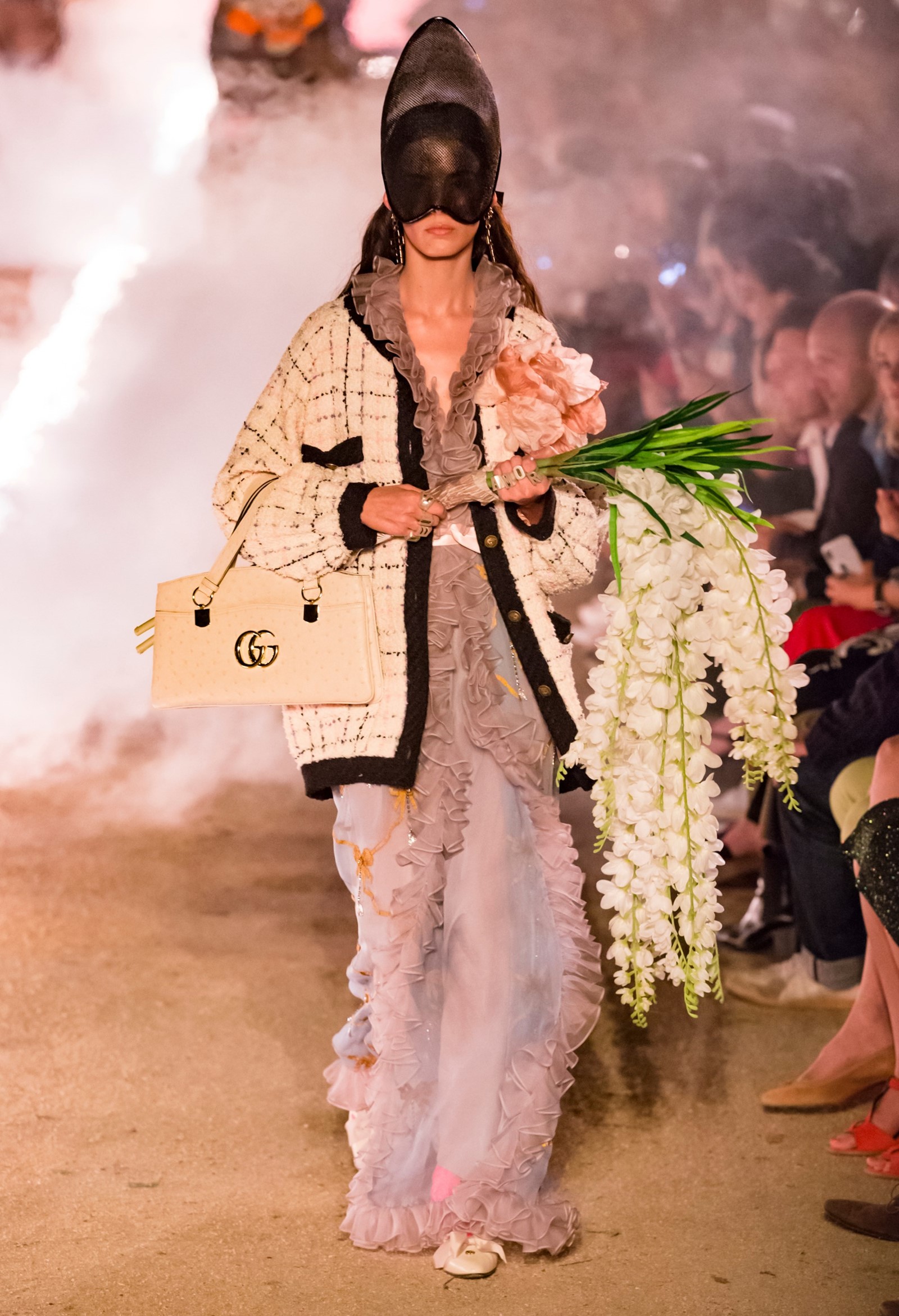

Fascinating though it may be, death isn’t something you think of when you’re watching one of Alessandro Michele’s Gucci shows. Although there are dark references, occasionally touches of the morbid (last season the models clutched decapitated facsimiles of their own heads, after all), these collections vibrate with life and vitality. They are energetic, and energising. Oddly, this had the same sensibility – perhaps because with death comes the idea of resurrection and immortality. Maybe that’s getting a bit deep and meaningful, which it’s difficult not to be when perched in an ancient graveyard watching spectral wraiths meander by. But there is something in the mood of the cultural moment that feels like the end of an era, the death of one time, and the rebirth of something different. Fashion certainly isn’t immune – and to some degree, Michele’s Gucci is the bellwether of a new approach to creating clothing, to beauty as a whole even. That’s what comes to mind when references to popstars and computer games are scrambled together on luxury clothing, when a dancing Bacchanalian faun makes you think of ancient porcelain patterns, until you realise the name of a hotel is emblazoned underneath it.
“Alyscamps is not what it seems,” Michele stated. “Alyscamps is a Roman cemetery, but it’s not a cemetery; it was a promenade, then it became a walk in 1700 – it is a hybrid place which has several significances.” Is a skeleton still a skeleton when it’s embellishing a dress in glistening golden jewels? Is a dead body still a dead body if it’s encased in gold? How about a living body? There are multiple philosophical questions raised by Michele’s aesthetic offerings – which, granted, could not be fully appreciated by the light of flaming tapers. Rather your eyes were pulled to individual details, like religious reliquaries glistening from carved alcoves – a Byzantine cross danging at a wrist, a pair of crystal-encrusted sunglasses, carved cameos and golden symbols of flames and animals pulled from medieval bestairies and freemasonry, used to decorate leather handbags. But overall, as a sepulchral spectacle, it was unsurpassed. And the clothes will be discovered in Gucci stores across the world.
“Alyscamps is not what it seems. Alyscamps is a Roman cemetery, but it’s not a cemetery; it was a promenade, then it became a walk in 1700 – it is a hybrid place which has several significances” – Alessandro Michele
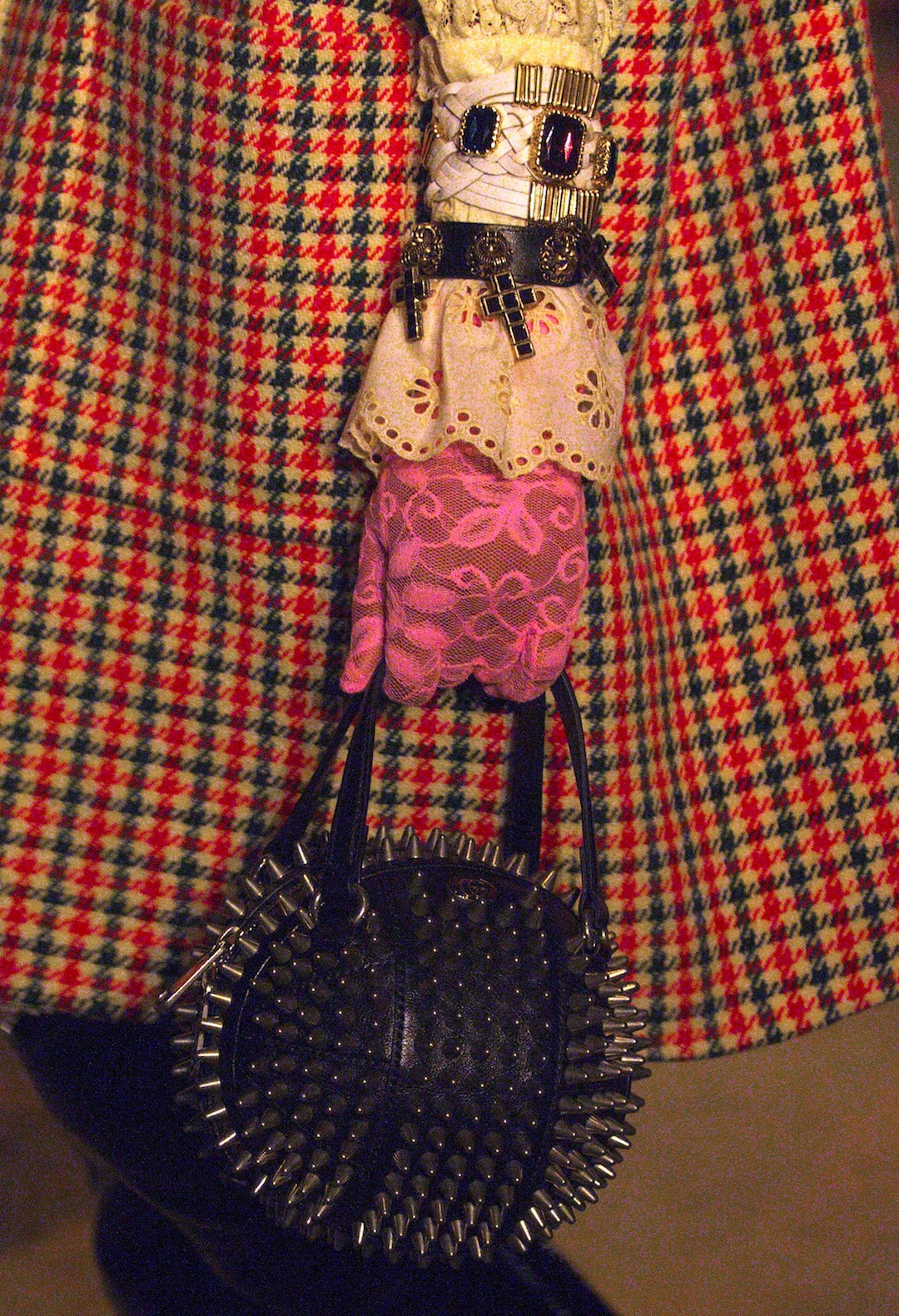
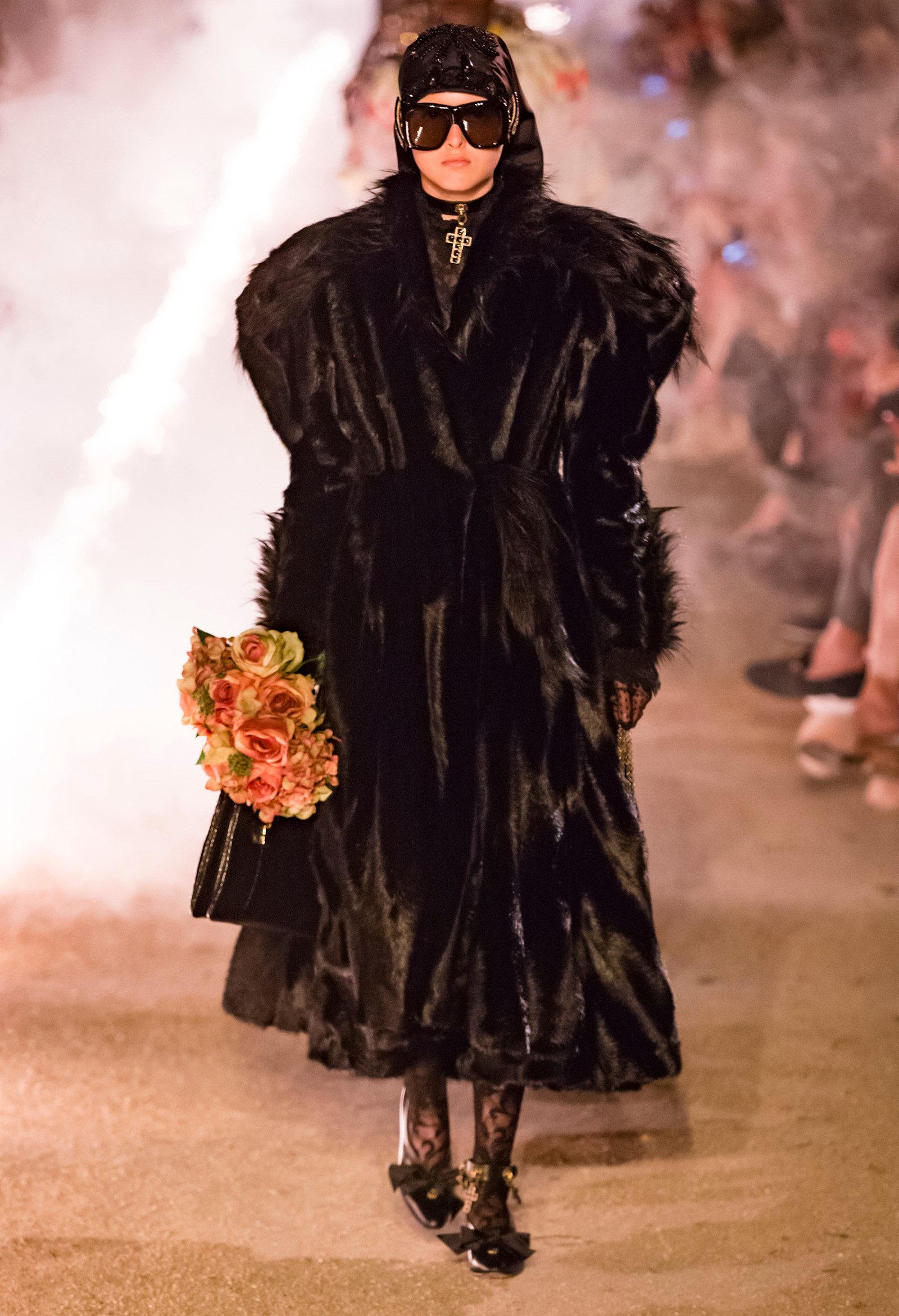
Yet, this collection was about something much deeper and richer than mere clothes created to fill stores. After all, no matter how many luxurious garments you attire yourself with, you can’t take them with you when you eventually shuffle off this mortal coil. But what Michele seemed to be trying to do, with this collection, was to further cement his own legacy – to give himself, his creations, his aesthetic, a kind of immortality. In a sense, that’s running counter to what fashion’s all about – which is to say, encapsulating the moment, with a tremulous butterfly-like temporality. Alessandro Michele’s work, with its culling from contemporary culture and focus on relentless youth (of both casting, and ideas) does that arguably better than anyone else. And yet, at its heart, Michele’s fashion isn’t fashion at all – it’s about a style. Seasonless, timeless, ever-lasting. Michele’s Gucci is powerful because it not only defines our current era, but is increasingly cementing its position as something exceptional and unique. Something to be remembered.
